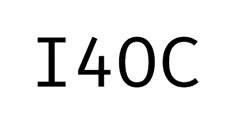Metric evidence of the scale of perceived fear related to the covid-19 pandemic in adults from Tacna
DOI:
https://doi.org/10.18050/psiquemag.v11i1.2756Keywords:
FCV-19S, Fear, Covid-19, Coronavirus, Fear of deathAbstract
The present research aimed to identify the metric evidences of the scale of perceived fear related to the covid-19 pandemic in adults from Tacna, 2020. The research was instrumental, a non-probabilistic sampling was carried out for convenience, with the participation of 157 adults from the city of Tacna, whose age ranged from 20 to 59 years, being 68.2% female and 31.85% male. The fear scale related to the covid-19 pandemic (FCV-19S) of Ahorsu et al. Was used. (2020) and the collection of information was virtual. The results indicate that the fear scale in its original proposal is one-dimensional but that at the time of translating it into Spanish it is convenient to treat it as twodimensional because the first does not present good adjustment indices, on the other hand the new proposal does present them in such a way which is concluded that it has good construct validity (X2 / gl = 3.286; CFI = 0.943; GFI = 0.926; TLI = 0.907; SRMR = 0.0504). This proposal was chosen (AIC = 72,712) when comparing it with two others that did not reach the optimal criteria. The adjustment index of the bifactorial proposal presented evidence of construct validity and with adequate bifactor model indices (X2 / gl = 1.713, CFI = 0.992, GFI = 0.981, TLI = 0.971, SRMR = 0.0260; wh = 0.703; Hng = 0.955); although the ECV = 0.521 and PUC = 0.571 were low. However, it should be tested in future research. The scale presents an ordinal alpha of 0.856 and an omega coefficient = 0.836, showing that the instrument has high reliability. The study reports that the Spanish version of the FCV-19S applied to the population of Tacna, Peru, demonstrated a bifactor model with adequate psychometric properties. Therefore, it is recommended to use it within the general population.
Downloads
References
Ahorsu, D. K., Lin, C. Y., Imani, V., Saffari, M., Griffiths, M. D., & Pakpour, A. H. (2020). El miedo a la escala COVID-19: desarrollo y validación inicial. Revista Internacional de Salud Mental y Adicciones, 1–9. https://doi.org/10.1007/s11469-020-00270-8.
Alyami, M., Henning, M., Kr'geloh, C. U., & Alyami, H. (2020). Evaluación psicométrica de la versión árabe de la escala Miedo al miedo de COVID-19. Revista Internacional de Salud Mental y Adicciones. https://doi.org/10.1007/s11469-020-00316-x.
Ascencio, M., Vila, M. G., Robles-García, R., Páez, F., Fresán, A., & Vázquez, L. (2012). Estudio de traducción, adaptación y evaluación psicométrica del Inventario de Miedos FSSC-II en una muestra de estudiantes de educación media superior. Salud mental, 35(3), 195-203.
Ato, M., & López, J., & Benavente, A. (2013). Un sistema de clasificación de los diseños de investigación en psicología. Anales de Psicología, 29 (3), 1038-1059.
Espinoza, M., Sanhueza, O., & Barriga, O. (2011). Validación de la Escala de Miedo a la Muerte de Collett-Lester en una muestra de estudiantes de Enfermería. Revista Latinoamericana de Enfermagen, 19(5), 1-10.
Ferrando, P. & Anguino-Carrasco, C. (2010). Análisis factorial como técnica de investigación psicológica. Papeles del Psicólogo, 31(1), 18-33. https://doi.org/2006-07-04
García-López, L. J., Olivares, J., & Vera-Villarroèl, P. E. (2003). Fobia social: Revisión de los instrumentos de evaluación validados para población de lengua española. Revista Latinoamericana de Psicología, 35(2), 151–160.
Gutiérrez, C., Bustos, N., Flórez, L., Parra, J., Rodrigues, D., & Rojas, J. (2012). Características psicométricas del Inventario de Miedos de Ollendick. 12(1), 85-93.
Huarcaya-Victoria, J., Villarreal-Zegarra, D., Podestá, A. & Luna-Cuadros, M. (2020). Consideraciones sobre la salud mental en la pandemia de COVID-19. Revista Peruana de Medicina Experimental y Salud Publica, 37(2), 327-334. https://doi.org/10.17843/rpmesp.2020.372.5419
Kaiser, H.F. (1960). The application of electronic computers to factor analysis. Educational and Psychological Measurement, 20, 141-151. https://doi.org/10.1177/001316446002000116
Montoya, O. (2007). Aplicación del análisis factorial a la investigación de mercados. Caso de estudio. Scientia et Technica, 13(35), 281-286. https://doi.org/10.22517/23447214.5443
Ramírez-Coronel, A. A., Martínez-Suárez, P. C., Pogyo-Morocho, G. L., Estrella-González, M. de los Á., Mesa-Cano, I. C., Minchala-Urgilés, R. E., Yambay-Bautista, X.R., Torres-Criollo, L.M., González-Pando, D., Sepulveda-Aravena, J., Romero-Sacoto, L.A., González-León, F.M., Ochoa-Yumbla, C.C., Latacela, G.A., Abad-Martínez, N. I. (2020). Psychometric assessment and nursing intervention in fear of covid-19. Project crimea. Archivos Venezolanos de Farmacologia y Terapeutica, 39(5), 660–666. https://doi.org/10.5281/zenodo.4262353
Rosario, F., Manrique, C., Estrada, E., Misare, M., Grajeda, A. & Pomahuacre, J. (2020). Propiedades psicométricas: Escala de asertividad en escolares peruanos. Revista de investigación en Psicología 23(1) 159-178. https://doi.org/10.15381/rinvp.v23i1.18099
Watson, D. & Friend, R. (1969). Measurement of social-evaluative anxiety. Journal of Consulting and Clinical Psychology, 33, 448-457.
Zubeidat, I., Salinas, J. M., & Sierra, J. C. (2007). Escala de Miedo a la Evaluación Negativa y Escala de Evitación y Malestar Social: Fiabilidad y validez en una muestra de adolescentes españoles. Clínica y Salud, 18(1), 57-8.
Downloads
Published
How to Cite
Issue
Section
License
Copyright (c) 2021 PsiqueMag

This work is licensed under a Creative Commons Attribution-NonCommercial-NoDerivatives 4.0 International License.
You are free to:
- Share — copy and redistribute the material in any medium or format
- The licensor cannot revoke these freedoms as long as you follow the license terms.
Under the following terms:
-
Attribution — You must give appropriate credit, provide a link to the license, and indicate if changes were made. You may do so in any reasonable manner, but not in any way that suggests the licensor endorses you or your use.












